MARKET OVERVIEW
The us writing instruments market is at a unique juncture of evolution and heritage. While communications in cyberspace threaten to engulf everyday life, it is reasonable to assume that the effectiveness of pens, pencils, and markers would diminish. The industry, though, has not only survived but will discover means to evolve well beyond the old supply-and-demand dynamic. Rather than being utility-driven, writing instruments will have a more complex function in American culture, education, and individual expression.
Consumerism will determine a new generation for this industry. Customization will take center stage, with consumers looking for instruments that express their personality, lifestyle, and aesthetic sense. Fountain pens, mechanical pencils, and calligraphy kits will be far from specialty luxuries. They will become statements of style and deliberate choices, especially among younger generations who hunger for tactile experiences that cannot be provided by digital technology. Artist collaborations and limited runs will no longer be marketing tricks instead, they will be cultural touchstones that add emotional significance to otherwise plain writing instruments.
In classrooms, among students and educators, handwriting will still have intellectual advantages that cannot be duplicated on screens. As increasing research identifies mental benefit in handwriting, specifically for recollection and comprehension, schools and colleges will revisit and implement handwriting routines to some extent. The shift will require more than standard classroom pencils to accommodate it. The demand will be for students who use instruments specifically designed for comfort, durability, and ergonomic assistance during extended periods of writing.
Corporate America, as it is going digital, will also have a niche for writing instruments. Executive offices and conference rooms will continue to have the best pens as a symbol of professionalism and attention to detail. The resurgence of written notes in business communications, as is typically viewed as more thoughtful and personal, will fuel the design and purchase of high-end pens and stationery.
Environmental responsibility will play a quiet but strong role in changing the manner in which products are designed and delivered. Sustainability will not always be an issue of compliance, but as a creative challenge to producers. Materials will trend toward biodegradable components, refillable products, and packaging waste-reducing. These changes won't be imposed by regulation but by a consumer who has ethical considerations.
Besides the utilitarian use, the us writing instruments market will expand its cultural presence through collaboration with schools, artists, and community organizations. Activities that promote handwriting as a form of therapy, art, or heritage conservation will give the industry added depth and strength. This approach not only protects the market from becoming outdated but optimizes its usability in modern society.
Looking ahead, we can envision the us writing instruments market to be not a blast from the past but rather a canvas for innovation, identity, and authentic interaction in an over-screened world.
The US writing instruments market is estimated to reach $4,356.2 Million by 2032; growing at a CAGR of 4.9% from 2025 to 2032.
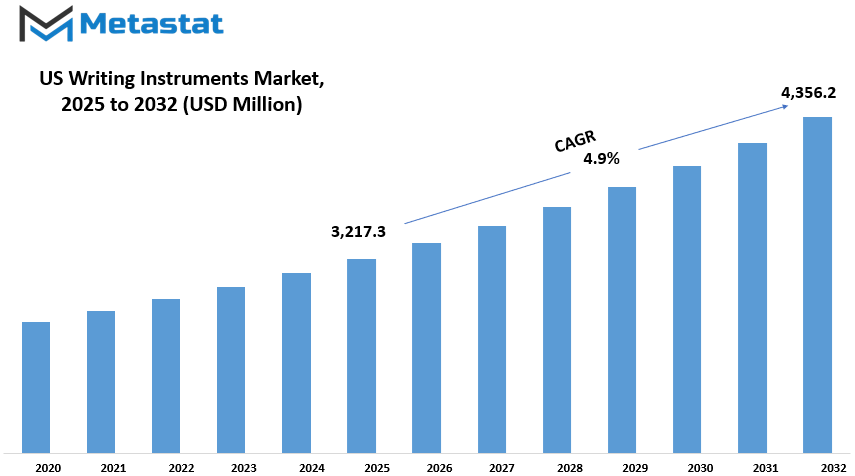
GROWTH FACTORS
The us writing instruments market is witnessing an evolutionary phase driven by changing consumer behavior, preferences, and technology trends. One of the principal drivers for this market is increasing demand for premium and customized stationery. Consumers, more so among the youth and businesspersons, are seeking products that symbolize their taste and personality. Customized pens, lifestyle notebooks, and high-end materials are gaining ground, especially as corporate gifts or statement tools. Aside from this, constant usage of writing tools at schools and offices maintains demand constant. Despite the popularity of digital tools, the old pen and paper find application in schools and even during meetings or brainstorming activities at workspaces.
There are also threats to the market. One of the most significant ones is the constant development of digital alternatives, reducing the need for the traditional writing utensils. Smartphones, tablets, and laptops are being used more for note-taking, communication, and creative tasks. This affects not just casual users but professionals as well, hence leading to a gradual but noticeable decline in daily use of pens and pencils. Another restraint is the growing problem of environmental sustainability, especially the consumption of disposable plastic pens. These kinds of products are generating plastic waste, and adversaries from green-conscious consumers and activist groups have criticized them.
Even in the presence of such restrictions, though, there are optimistic opportunities. One of the most comforting is the focus on eco-friendly sustainable innovation. Businesses that introduce refillable pens, biodegradable offerings, or recycled packaging are becoming progressively acceptable. These items are congruent with the ideals of more and more consumers who care about minimizing their footprint on the environment. This applies not only to ordinary stationery but also, say, for high-end writing tools, where consumers are willing to spend more for green products. Another chance lies through the expansion of Internet shopping. Online retailers offer a venue where specialty products, for example, calligraphy pens or art materials, can develop an interested clientele. Small businesses and individual artists can sell to customers across the country without the need for a storefront.
In most cases, even as digital tools continue to form behavior, there is still room for writing tools in the US. Whether on innovative design, ecologically friendly, or customized, the market is able to grow by addressing what users really want today.
MARKET SEGMENTATION
By Product
The us writing instruments market is a major segment of the stationery business, registering steady demand in the various segments of consumer classes like students, business professionals, and artists. Among the various categories of products covered under this industry, pens are the top-selling products with a market share of $1361.7 million. Pens have widespread application in schools, offices, and homes, which is the reason for their strong market presence. From gel and ball pens to fountain pens, the variety appeals to those who require functionality and style. More and more new designs and types of ink are coming out, and pens become a part of life.
Pencils, the other primary segment, are employed by working professionals and students for regular writing, drawing, and technical illustrations. Wood and mechanical pencils offer precision and are easy to erase, and thus are trendy. Pencils are specifically designed by schools to remain in demand throughout the early years of education. Coloring instruments, such as crayons and colored pencils, also occupy a large segment of this market. These products are aimed mostly towards the young consumers and working professionals. These products are used in schools, at home, and in painting studios, helping the consumers experiment and convey color.
Highlighters and markers are worth their gold equivalent when used to learn and explain things clearly. Highlighters are especially useful for professionals and students who must find significant points immediately in texts or studies. Markers, on the other hand, are used for everything from marking to art. Their uses in schools, homes, and offices keep demand levels steady. Businesses also make different kinds of alternatives within this product category, e.g., dry-erase markers for whiteboards and permanent markers for labeling products.
The "Others" segment includes products that are not under the common categories but are consumed by the common people. This may include correction pens, calligraphy pens, or digital styluses. Although smaller in size, it is still included in the market as it meets some specifications that cannot be met by the common pen or pencil.
Generally, the us writing instruments market is driven by functionality, education, and self-expression. Digital products are on the rise, yet tangible writing products are still required for most day-to-day tasks. As part as people write, draw, or learn, this market will continue to grow and evolve to meet their changing needs.
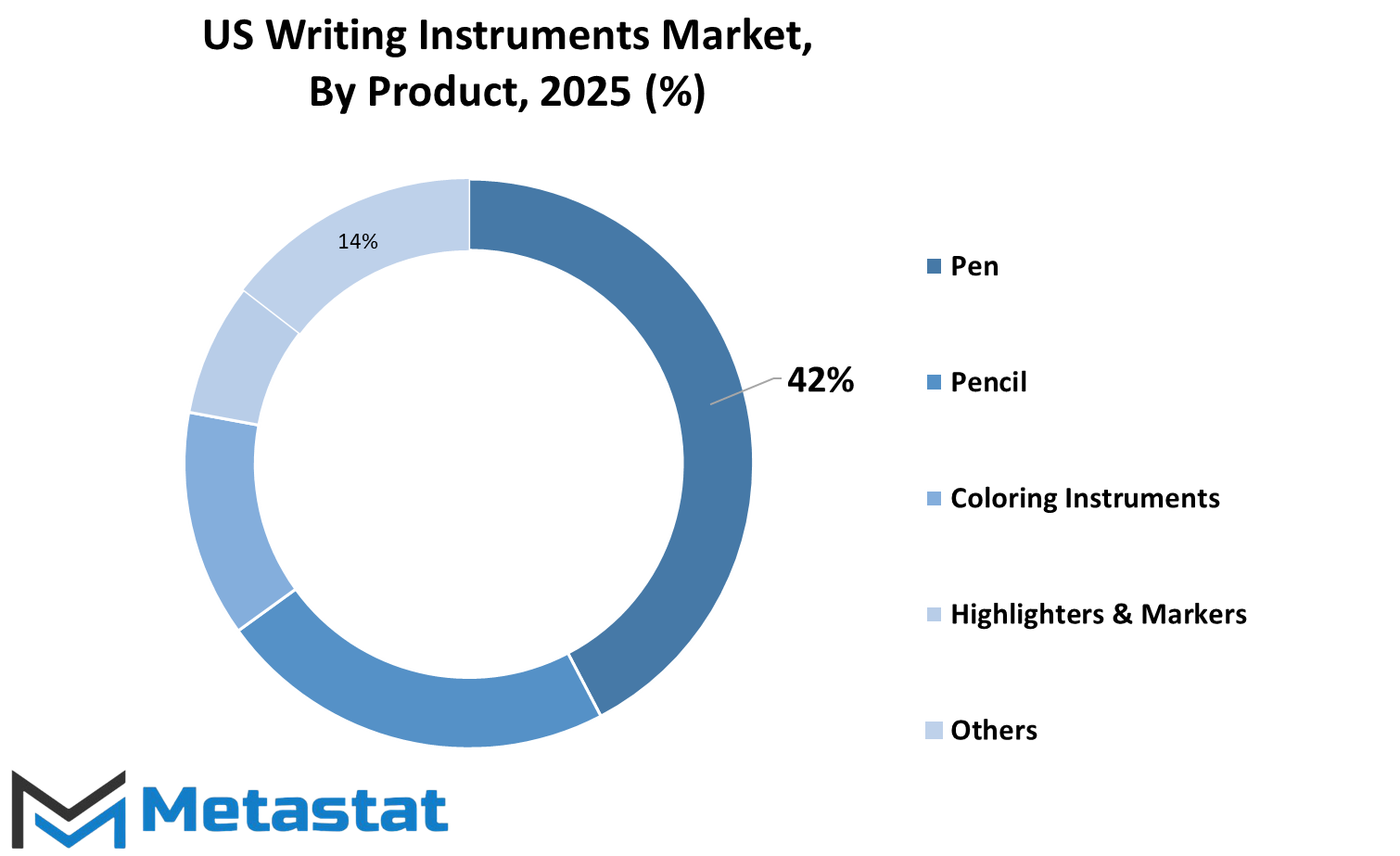
By Sales Channel
The us writing instruments market is motivated by different channels of sale, which are each a key component of the distribution of these products to consumers. Stationaries is a leading channel, which continue to be a steady source of school and office supplies. Many still prefer to go to a stationery store because they can touch and feel the writing tools before buying them. Such stores normally have a wide range of pens, pencils, markers, and other office accessories. Stationaries are also trusted by professionals and students who need specialized tools and return to the same source for quality and dependability.
Supermarkets and hypermarkets are another important channel. These large retail stores offer writing materials as part of their wide range of household products. A number of consumers like buying pens or notebooks together with grocery or other household products. The advantage of shopping in one place renders this channel extremely popular. Bargain hunters and families with children pursuing education in schools are enticed by the lower prices and bundle offers offered in these stores.
Departmental stores also engage in the sale of writing products. Departmental stores carry well-known brands and offer premium as well as affordable alternatives. People shopping at departmental stores usually look for quality and a better shopping experience. Departmental stores may not offer the cheapest rates, but they usually make up for it with decent service and a better-conditioned range of products. This is easier for customers to choose only what they desire without having to rush.
The market also includes other sales channels such as online shops, convenience shops, and specialty gift stores. Retailing online has experienced steady growth, especially as they allow consumers to compare products, review products, and buy from home. Convenience shops carry very little writing supplies for those who need something in their hands quickly. Gift stores deal with stylish or upscale pens that are bought often as gifts or collectibles.
These channels of sales each have a clear but important role to play in the us writing instruments market. Stationaries offer diversity and trust, and hypermarkets provide convenience and discounts. Department stores attract quality buyers, and other sales channels such as online stores offer consumers more options and convenience. The combination of channels allows the market to serve all kinds of consumers across the country.
|
Forecast Period |
2025-2032 |
|
Market Size in 2025 |
$3,217.3 million |
|
Market Size by 2032 |
$4,356.2 Million |
|
Growth Rate from 2025 to 2032 |
4.9% |
|
Base Year |
2024 |
|
Regions Covered |
North America, Europe, Asia-Pacific, South America, Middle East & Africa |
REGIONAL ANALYSIS
The us writing instruments market has different geographic regions that affect it differently. Geographically, the market is geographically divided into North America, Europe, Asia-Pacific, South America and Middle East and Africa. Under North America, major countries included the United States, Canada and Mexico. They are the largest markets for writing equipment because they have large education systems, office settings and pen, pencils and such overall consumer demand. Demand in the United States, especially, is operated by institutional purchases by schools and businesses, as well as individual purchases by consumers, which maintains market levels throughout the year.
Europe, the second important region, is included in the UK, Germany, France, Italy and the rest of Europe. The region continues to enjoy stable demand, mainly powered by its good education systems and creative industries. For example, Germany and France are known to focus on the presence of functionality as well as writing products, and it maintains a market for both low-end as well as high-end products. Thanks to the need to save the environment nowadays, environmentally friendly, re-purpose and very popular is the trend found in Britain.
The Asia-Pacific region is a high-development region and includes India, China, Japan, South Korea and the rest of the Asia-Pacific. India and China are looking at the demand for low cost and reliable writing goods, with huge student population and increasing urbanization. Japan and South Korea focus largely on quality and design, usually building a market for new or high-end products. The growing middle class and focus on education in this region substantially increase demand.
South America includes Brazil, Argentina, and the Rest of South America. Though smaller in size than Asia-Pacific and North America, the region has potential. Countries like Brazil are seeing increased investment in education that is expected to fuel the need for writing instruments. In Argentina, however, cultural usage in journaling and note-taking continues to support consistent usage.
Middle East & Africa includes GCC Countries, Egypt, South Africa, and the Rest of Middle East & Africa. Demand in the region is primarily spurred by schools and expanding corporate bases. South Africa and the GCC Countries show evidence of gradual growth, driven by economic growth and investment in literacy initiatives.
COMPETITIVE PLAYERS
The us writing instruments market is characterized by an array of key players who guide their courses through their brands, products and innovation. Some companies establishing themselves in terms of quality and reliability include Faber-Castel, Nevel Brands, Mitsubishi Pencil Company, Ltd., LINK Limited and Hindustan Pencil Private. Ltd., having been in business for decades, managed to achieve consumer trusts, which is an important element in keeping their products popular. Flair World, Shanghai M&G Stationery Inc., Pentel of America, Ltd., Luxor, and Pilot Corporation of America are a few of the most important companies in the industry as well. They all offer a range of pens, pencils, markers, and highlighters to give consumers plenty of choices depending on their preference and needs.
Local and international firms comprise the United States writing instruments market, The firms compete not just in terms of quality of product but price, availability, and brand choice. Others focus more on conventional writing instruments like ballpoint pens and graphite pencils, while others are shifting towards green or technology-mapped themes. The variety maintains the market lively and interesting as each tries to meet the different preferences of students, professionals, artists, and common users.
Despite the growing use of digital technology, writing pens continue to be used extensively for many purposes. People still jot things down in notebooks, fill out forms by hand, draw, or sign agreements every day. Because of this, the demand for writing tools never stops. What has changed is the way companies promote their products and respond to customer trends. Some now create pens out of recycled plastic, or pencils with longer leads, to appeal to environmentally conscious buyers.
These companies also invest in distribution, marketing, and packaging in order to distribute products to a larger market. Others specialize in sales via the web, whereas others utilize traditional shopping malls. Advertising and social media are also essential in making consumers aware that the company has a new or limited edition of products. In most cases, the competition forces such companies to keep innovating.
The us writing instruments market is increasing at a consistent but slow pace. While digital technology has changed how people communicate and trade, there is a clear demand for basic equipment such as pen and pencils. With major players such as the people mentioned in the industry, the industry is ready to stay strong in the future.
US Writing Instruments Market Key Segments:
By Product
- Pen
- Pencil
- Coloring Instruments
- Highlighters & Markers
- Others
By Sales Channel
- Stationaries
- Hypermarket/Supermarket
- Departmental Stores
- Others
Key US Writing Instruments Industry Players
- Faber-Castell
- Newell Brands
- Mitsubishi Pencil Co., Ltd.
- Linc Limited
- Hindustan Pencils Pvt. Ltd.
- Flair World
- Shanghai M&G Stationery Inc.
- Pentel of America, Ltd.
- Luxor
- Pilot Corporation of America
WHAT REPORT PROVIDES
- Full in-depth analysis of the parent Industry
- Important changes in market and its dynamics
- Segmentation details of the market
- Former, on-going, and projected market analysis in terms of volume and value
- Assessment of niche industry developments
- Market share analysis
- Key strategies of major players
- Emerging segments and regional growth potential



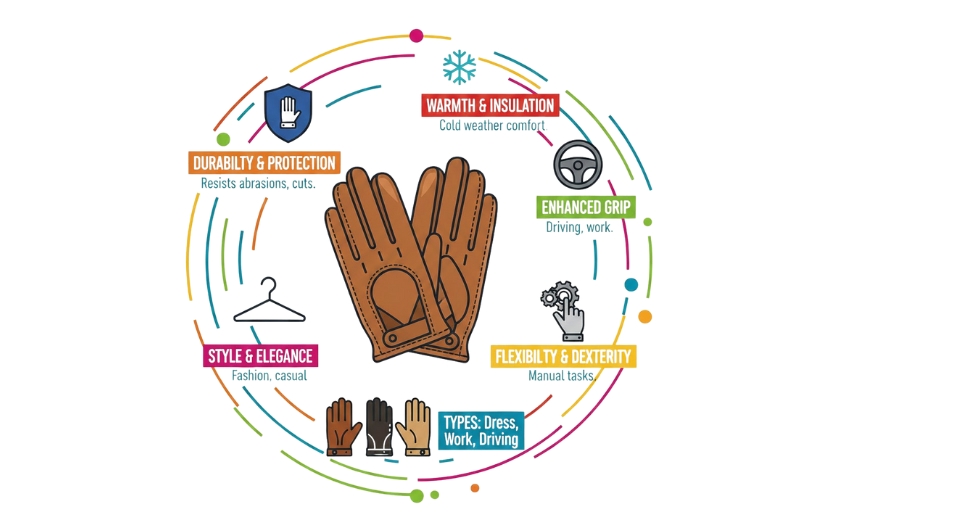
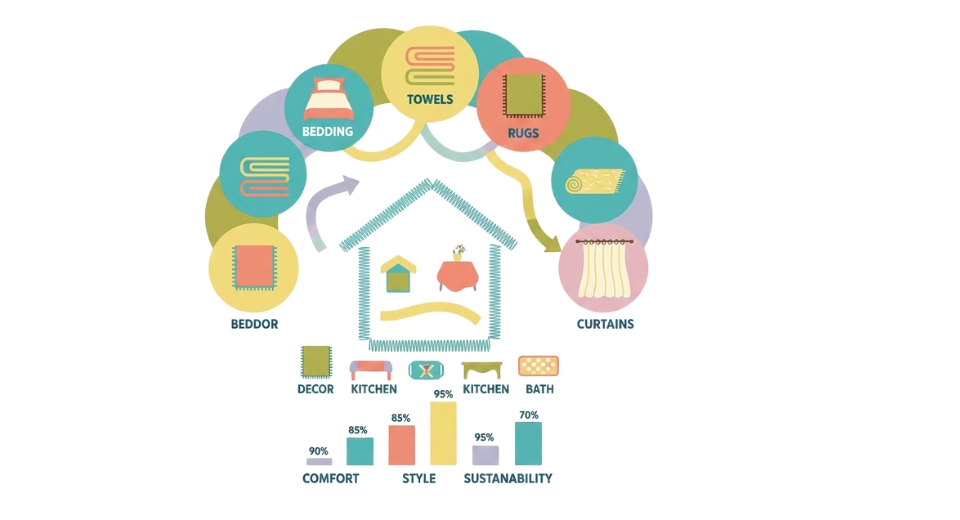

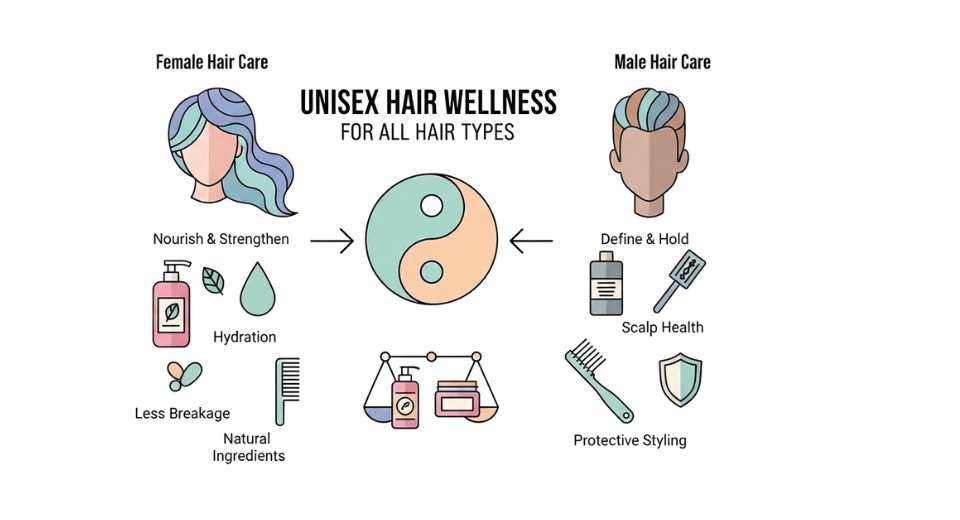

 US: +1 3023308252
US: +1 3023308252






